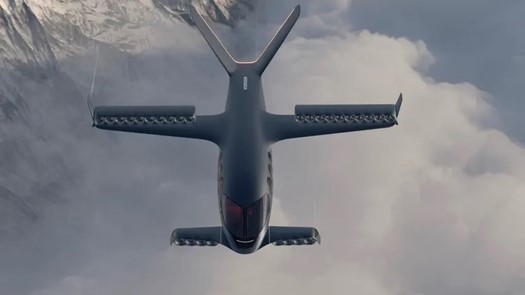
It’s the work of Swiss startup Sirius Aviation AG,
which has apparently had a “team of 100+ engineers” beavering away at “intense R&D” on this
project in the insanely picturesque lakeside town of Baar since 2021. Sirius
says it’s already started the certification process with the FAA, with a
demonstration plane scheduled for first flights in 2025. Full certification,
commercial deliveries and shuttle flights are planned for 2028.
To access that maximum 1,150-mile range, you’ll
need to go for the Business version, which can only take three passengers. A five-passenger, commercially-focused Millennium
version displaces two seats’ worth of hydrogen tanks, reducing range to 650
miles (1,046 km) – but that’s still more than four times the 124-155-mile
(200-250-km) range Lilium is targeting using batteries, and it pushes Sirius
into contention for routes like LA to San Francisco, London to Berlin,
Melbourne to Sydney, or Beijing to Seoul.
The minor one is its
deflected-thrust, small-fan system, which looks like a recipe for throwing
energy away. As we discussed with Lilium CTO Alistair McIntosh, small fans with
high disc loading are vastly less efficient in VTOL and hover operations than
the larger propellers and rotors used on most eVTOL air taxi designs. Sirius is
planning to have 20 fans, each just 11.8 inches (30 cm) in diameter, along its
wings and canards.
The liquid-hydrogen
powertrain, on the other hand – that would be a bigger concern for us. There’s
little doubt at this stage that hydrogen is the path that’ll get us to clean
short-range and regional aviation, and there are a number of companies working
to develop and certify aviation-grade hydrogen powertrains. But this alone is
an enormous task – there are test planes
flying on hydrogen as we speak, but it remains a cutting-edge technology that
nobody’s got certified or into commercial use yet.